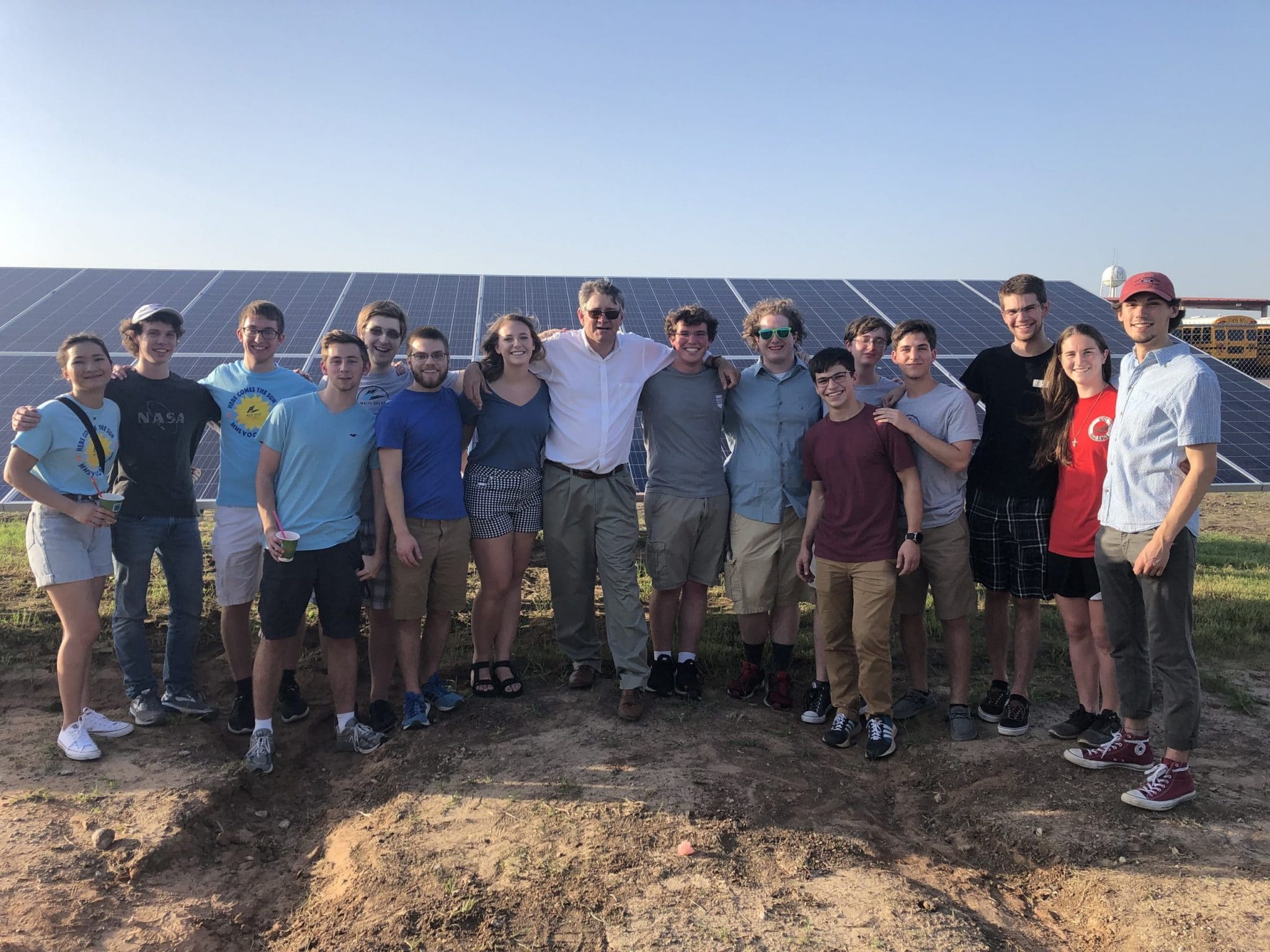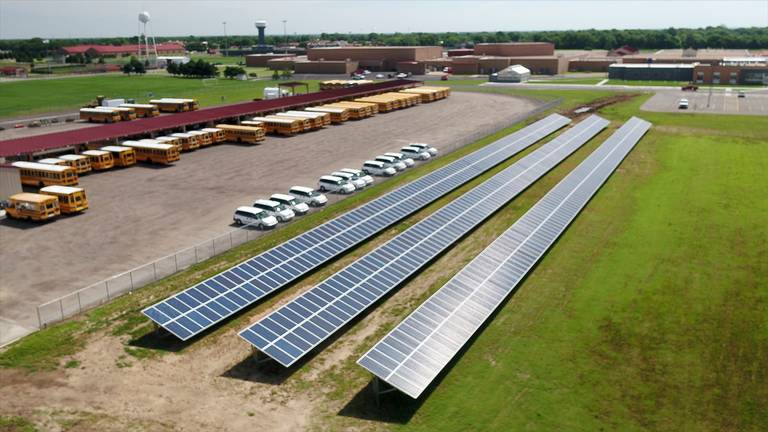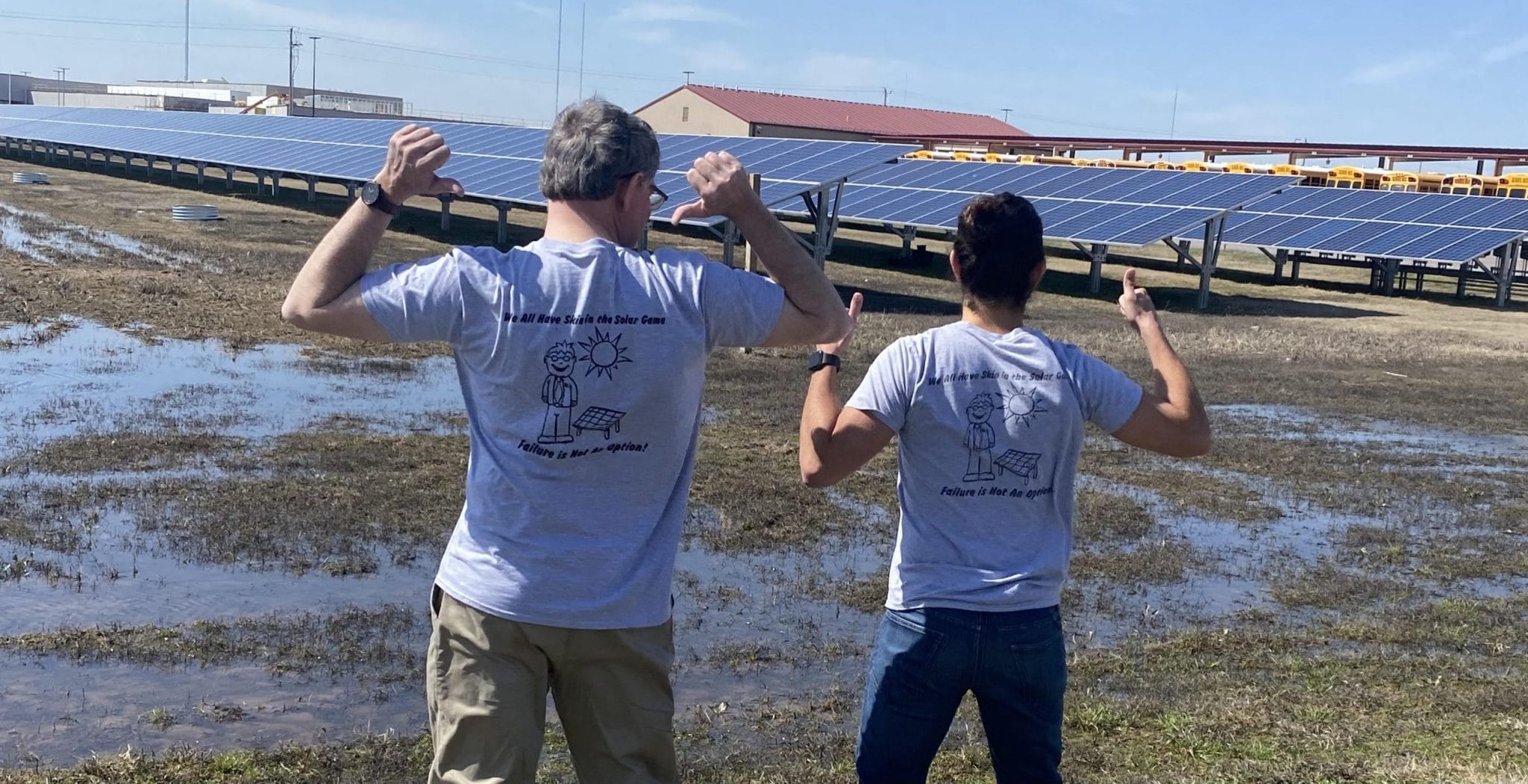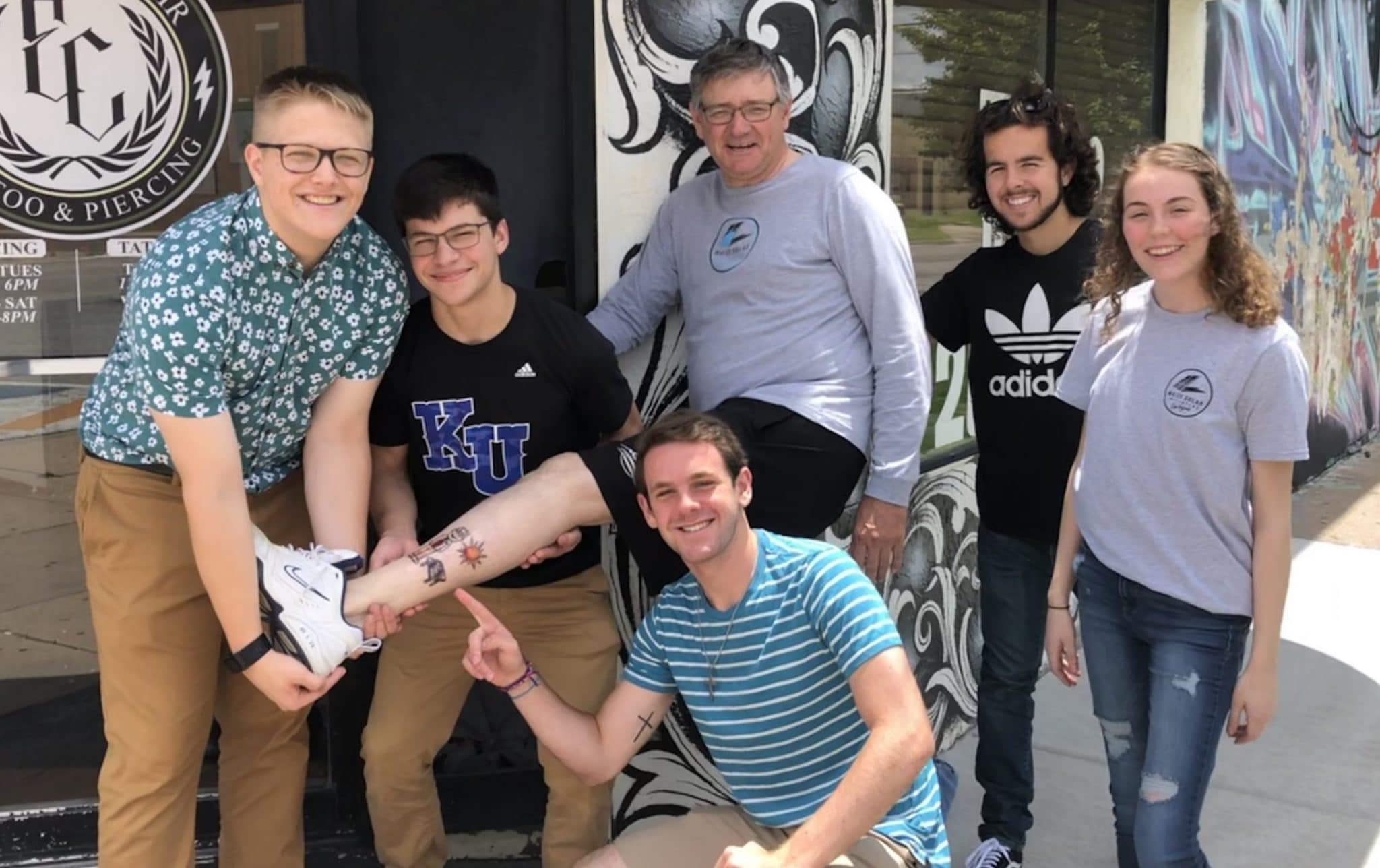This article is from the March 24, 2021, issue of Flip the Script, a weekly newsletter moving you from climate stress to clean energy action. Sign up here to get it in your inbox (and share the link with a friend).
Have you ever met someone with an intense love for their work—and a tattoo to prove it? Enter: Stan Bergkamp. He’s a physics teacher at Maize High School (outside of Wichita, Kansas) that worked tirelessly to bring solar (the largest array in the state) to his school. His passion for solar bleeds out of him—literally: He got a tattoo in honor of the solar array after his students surpassed their fundraising goal. He’s a knock-your-socks-off kind of person filled with joy and enthusiasm for solar. (If he had taught us physics, maybe we would have paid attention.)
Stan embodies the idea at the core of Generation180’s work: that everyday people like you can be the spark for change in your community. Here is our interview with him, edited for length and clarity.
****
Generation180: What gave you the idea to bring solar to your school?
Stan Bergkamp: The path to solar chose me. It started in the summer of 2016. I saw the savings I realized from having solar on my ranch and knew the school district should purchase solar since it would be a worthy return on investment. I don’t have any kids of my own and have dedicated my life to teaching. I could’ve decided to sit back and retire, but this solar project is something that I felt I had to do. I learned in the Peace Corps that I can’t change the world, but I can change my little corner of it.
This is my drop in the bucket. If enough people make enough drops, we make a difference.
When I started this project, one of the first things I searched for was schools that have solar. I found on Generation180’s map [of schools with solar] that there was a huge void from Kansas to Dallas, TX. That was one of my goals: to put Maize on the map as the biggest school array in the state of Kansas. I wanted them to click on us. (I really wanted the biggest from Canada to Mexico, but Texas still beats us by a bit).
At first, I sought donations for the array by holding events and reaching out to former students. I got so caught up in the project and knew it was going to work, I didn’t even think about failure. I reached a tipping point in donations and it grew momentum. The stars aligned for us on solar.
In the end, we raised enough money and formed an LLC to take advantage of the federal tax credit. In June of 2019, the 240kW system went online. To date, we’ve saved $50,000, already an 8 percent return on investment. It’s been an incredible journey.
-

Stan Bergkamp at the solar dedication ceremony with his students at Maize High School in Maize, Kansas.
G180: How did the community and school board perceive the clean energy project? Were they supportive?
SB: The school board and superintendent provided the legal and financial support to get the project started. I told the board to imagine dropping a stone in the water, that’s what this project will do. I’ve since seen the project’s ripple effect throughout the community and other schools taking notice. I had another superintendent in Kansas call me, and I’m going to present to their school board.
The district approved, but they didn’t have to pay upfront costs. We did go through some legal hoops and they were supportive behind the scenes. The best thing that ever happened is that the district didn’t have to write the check, and that it was a community effort. Community buy-in is just as important as the pure cost savings of solar themselves. The kids can now say, “I helped make that happen.” I’ve had people ask what my kids will remember from my class in ten years. A student of mine in the room chimed in and said:
We’re going to remember that Bergkamp taught us that we can change the world.
G180: What do your students think about the project? Has it impacted any of their career choices or interests?
SB: I’ve seen a groundswell of support from my students. Last week I got an email from a former student at the University of Kansas who joined the solar car team and is pursuing mechanical engineering. I‘ve had so many at the college level circling back to me to get the live solar array data for a project and to share this story.
I’m glad it ended up not [being installed] on the roof and out of sight. Since it’s a ground-mount, the kids drive by and see it, and they can say “I was part of that.” Kind of like [Kevin] Costner’s “if they build it they will come.”
I ended up entering into a bet with them that if they raised $3,000, I would get this sketch tattooed on me.
I got a thank you note from a former student, with a sketch of me and the solar array on the backside. After some creative high-school chatter and persuasion, I ended up entering into a bet with them that if they raised $3,000, I would get this sketch tattooed on me. I was confident they could not raise this amount, but here we are. Social media worked in their favor. We also all got t-shirts made that say “we all have skin in the solar game.” It is a wonderful reminder that this solar project enabled them to feel like they are a part of something bigger than themselves.

G180: What learning opportunities has the array created for your students?
SB: The solar array transformed the landscape into an outdoor energy classroom. Our science classes use the live data in lessons. We’ve ceded the land around the school back to native grasses. Eventually, it is going to transform into a full living classroom to study solar, ecology, and wetlands – it’s the conference of a whole cycle of energy systems. Our science classes use the live data in lessons, and grade school classes can come over to visit to study science, too.
G180: There’s a lot of momentum building right now for clean energy across the country. What’s next, and what inspires you?
SB: Most schools won’t have a Stan Bergkamp, nor an individual donor willing to take the risk, so we need a policy change to enable all schools to go solar. My dream legislative goal is to pass a green bond to equip all schools with solar. I also want to get batteries to be the first school microgrid in Kansas and to enable us to go off the grid. Solar + storage is the future for schools.
As important as teaching them how solar energy works was showing the kids that I had a vision and was willing to put in work to achieve it. The students have embraced solar and it is symbiotic: we feed off of each other’s energy. These kids, unlike my generation who sees climate change as a political football, have read the climate reports and made the connection. They have more skin in this game and are dedicated to using their voice to make a difference, so that gives me hope to keep going.

****
Want to bring solar to your school? Check out our library of resources and How-to Guide to help kick-off a campaign.
Still curious about Stan? Check out this video (filmed in July 2019) to get a sense of the passion he brings to the classroom.















